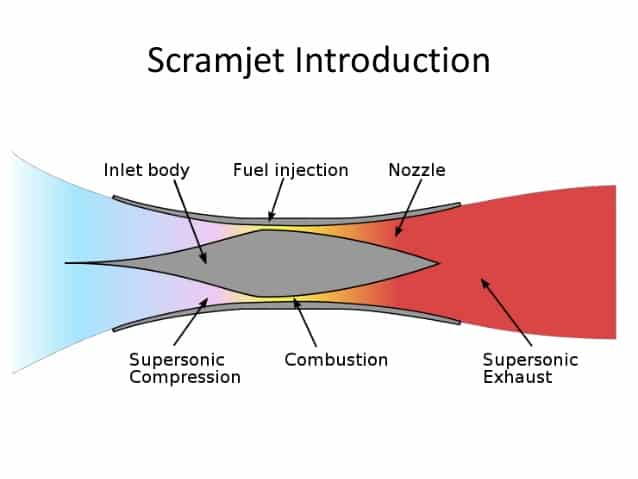TOPIC: Science and Technology- developments and their applications SCRAMJET and effects in everyday life Achievements of Indians in science & technology; indigenization of technology and developing new technology.
What is SCRAMJET?
- It is an engine used for creating motion in missiles, aircraft and rockets.
- It works efficiently when the body is moving between 3-6 Mach.
- It is a new technology in the field. While present engines can only go up to 1-2 Mach. The Ramjet engine helps to increase the speed to 3-6 Mach.
- Ramjet cannot produce forward motion at lower speeds so it is assisted by a conventional jet in the beginning till Ramjet takes over.
What is SCRAMJET?
- It stands for Supersonic Combustion Ramjet.
- It produces speeds higher than Ramjet.
- It is used for hypersonic speeds.
- The object will require conventional, Ramjet and Scramjet engines for all stages.
- It has no movable part at all (unlike turbine in the conventional engine). Movable parts cannot witness such high speeds.
- It is a Ramjet in which combustion takes place in a stream of gas moving at supersonic speed.
Scramjet in news
- ISRO will test fly a small model of an indigenously developed ‘SCRAMJET’ engine in July 2016.
- Named Advanced Technology Vehicle (ATV), the test platform will comprise a scramjet engine hitched to a two-stage sounding rocket.
- It is assumed that the new engine will help put satellites and other systems into space one day.
- The experiment is called Scramjet Propulsion Experiment (SPEX).
Benefits of Scramjet
- It could power a future dream Indian rocket of two stages (compared to three and four stages at present).
- It will make the rockets super efficient and will provide much cheaper access to outer space.
- Conventional launchers need to carry liquid oxygen (fuel) and oxidizer for combustion to produce thrust. The SCRAMJET engine obtains the oxygen (to burn the fuel stored in the rocket) from the atmosphere up to 50 Km from the Earth’s surface by compressing the incoming air before combustion at supersonic speed. This techniques is called the ‘air-breathing propulsion system’. In turn it pushes the vehicle and helps to release the satellite in it to space. It can also liquefy the oxygen and store it on board.
- Almost 80% of the lift-off mass of the launch vehicle is due to the oxidizer. By removing the need to carry oxygen, the lift-off mass will be considerably reduced. This will contribute to smaller and lighter launch vehicles with more payload capacity.
- It will achieve speeds up to Mach 8.
Also Read:- Chenab Bridge: Another Feather in the Cap for Indian Railways











